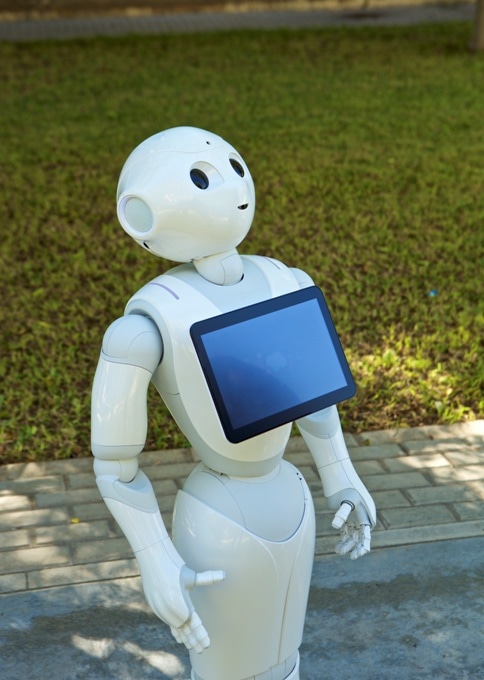Oct 17 2018
According to a recent report by the United Nations, 13% of the world's population is over the age of 60, and by 2050 this percentage will nearly double, reaching 25%.
 Credit: RUVID
Credit: RUVID
In response, researchers at the Universitat Politècnica de València (UPV), the Universidad de Alicante (UA) and the Universidade do Minho have developed an interactive robot called Pharos, which aims to help the elderly with their everyday household tasks. The research recently appeared in the journal Sensors.
Our objective is to turn Pharos into another companion of the elderly; a virtual assistant, friendly and easy to use which regularly recommends personalized physical activities, promoting a healthy life and facilitating the active aging of the population.”
Vicente Julián, Co-author
Pharos is modeled on a commercial robot – Pepper – to which the scientists incorporated two modules.
The first module delivers a personalized exercise program for each user. The second uses advanced AI methods to evaluate the exercise, completed, and work out whether the user has completed it properly. It does this by referring to an internal library of stored exercise data, which it learns from and adds to with each new user.
The robot also comprises a visual and physical interface that the user will interact with.
Once [the user has been] identified, Pharos determines the most appropriate exercises depending on their capabilities.
Furthermore, the exercise programme is regularly adapted to the evolution and health of the user.
To this effect, it includes a recommendation algorithm which can even help detect health issues."
Ester Martínez, Co-researcher
Compared to other similar systems, Pharos offers thorough monitoring of users, as well as the possibility to establish whether they are performing the exercises accurately or not.
It is a very beneficial tool for carers and assistants, as it makes it possible to easily monitor if the ability to perform specific exercises declines, which can indicate the onset of progressive physical and/or cognitive issues.
Low performance when conducting the planned exercises can indicate some sort of issue with the user. By registering the exercise history, Pharos can help reveal underlying problems which would otherwise be impossible to see.”
The Spanish-Portuguese research team is presently involved in improving the user-robot interactions, enhancing the exercise recognition system, and making it possible for users to use it without obstructing others.
Pharos is one of the outcomes of Retogar, a project dedicated to enhancing the care of people with acquired brain damage headed by UA scientists.